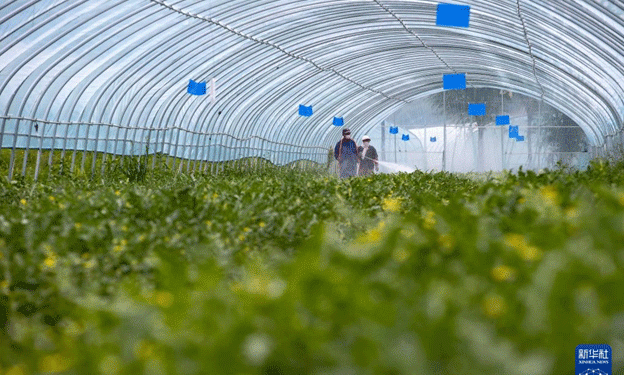On August 2, images from the Shatang Town high-efficiency vegetable demonstration base highlight the advancements in Ningxia’s agricultural sector. Spanning over 1,000 acres, this facility showcases innovative techniques aimed at enhancing vegetable yields and improving efficiency. The base employs several cutting-edge agricultural technologies, including:
- Earthworm Biotechnology: Utilizing earthworms to convert organic materials such as cow dung, straw, and vegetable residues into nutrient-rich vermicompost. This process improves soil health and fertility, promoting better crop growth.
- Straw Biotechnology: Integrating straw into the soil to enhance its structure and nutrient content, contributing to increased productivity.
- Microbial Agents: Applying beneficial microbes to boost soil health and plant resistance to pests and diseases.
These technologies collectively enhance the productivity of local vegetable farming, including tomatoes, peppers, and melons, which are grown in controlled environments such as greenhouses.
Technological Implementation and Impact
The facility’s use of these technologies is not merely theoretical but demonstrates tangible benefits:
- Increased Yields: The combination of earthworm biotechnologies and microbial agents results in significantly higher vegetable yields compared to traditional farming methods.
- Soil Improvement: The application of vermicompost and straw biotechnologies enriches the soil, leading to better crop health and resilience.
- Sustainable Practices: These methods reduce reliance on chemical fertilizers and pesticides, promoting more sustainable agricultural practices.
The demonstration base in Shatang Town serves as a model for other regions, showcasing how innovative agricultural technologies can transform rural areas. The facility’s success underscores the potential of facility agriculture to drive economic growth, improve food security, and support rural revitalization.
The high-yield, high-efficiency vegetable production base in Shatang Town, Longde County, is a prime example of how facility agriculture can significantly contribute to rural revitalization. By leveraging advanced technologies such as earthworm and straw biotechnologies, the initiative not only boosts local agricultural productivity but also sets a precedent for sustainable farming practices. This approach aligns with broader goals of rural development, demonstrating the potential for agricultural innovation to drive economic and social progress.











